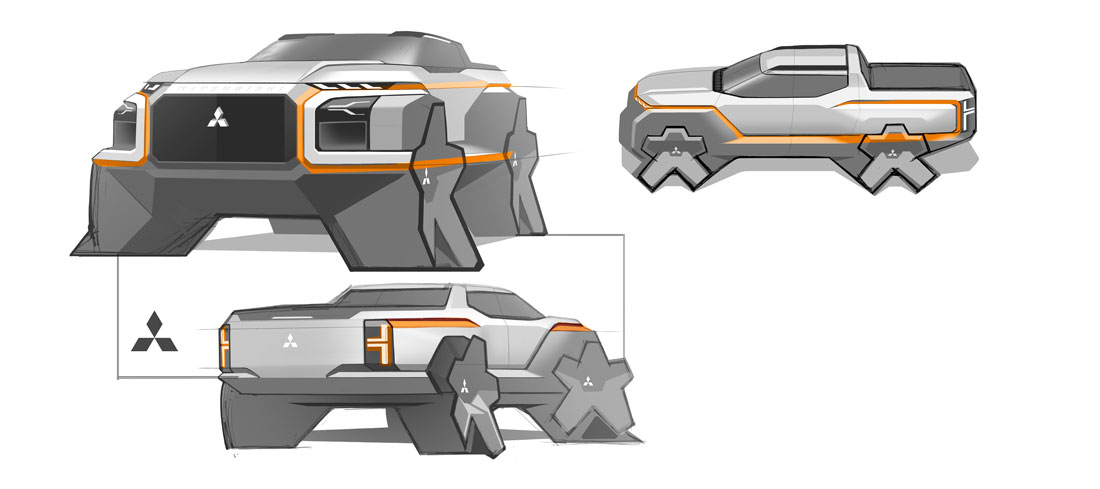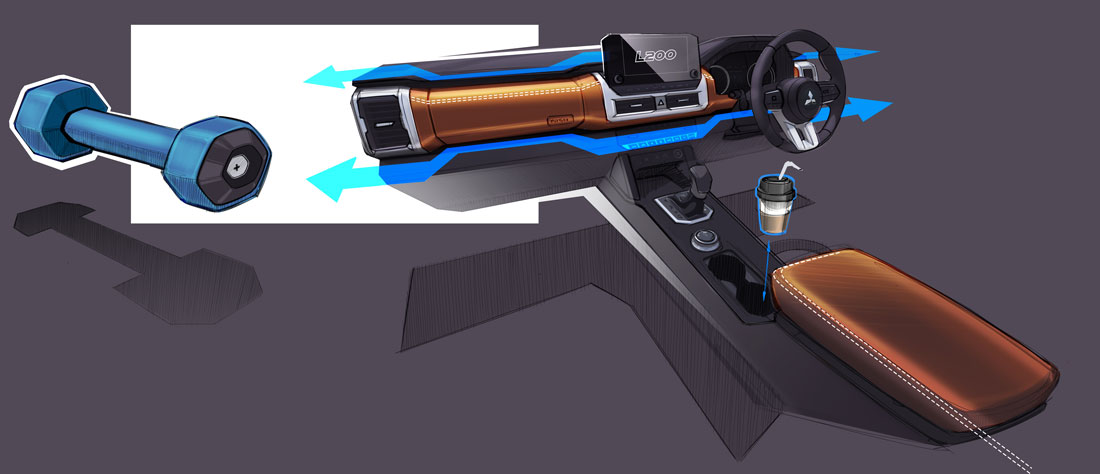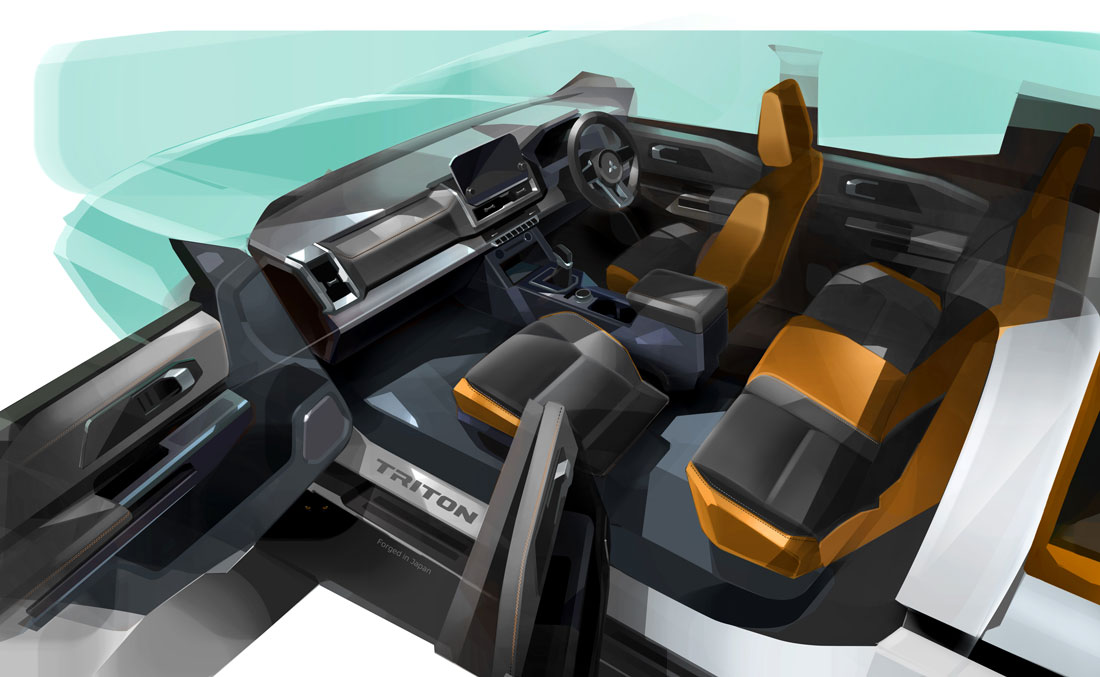Beast Mode. Thus the sixth generation of the Mitsubishi pickup presents itself, with a strong and blunt design concept which only the utilitarian typology of the vehicle prevents – unlike the recently introduced Xforce SUV – from completely expressing the Japanese company’s new design philosophy, the Timeless Modernity made of simplicity but with a strong design, destined to dictate all the Mitsubishis of the future and already anticipated last year by the XFC concept.

Encounter between past and future
The Triton, which in many markets as in the past will be called L200, is therefore – as Alessandro Dambrosio explains – “a meeting point between past and future.” Right-hand man of Mitsubishi design manager Seiji Watanabe, Dambrosio is the Executive Design Director under whom there are a group of Product Design Directors who deal with the various projects: among them Norihiko Yoshimine, who shares the paternity of the Triton with Dambrosio (although, it should be noted, the project was started by Tsunehiro Kunimoto, who was at the time – 2018 – head of the style centre).

Three-dimensional calender
Compared to the fifth generation, the main characteristics of the exterior, on which designers Goto and Koike worked, are a more muscular and solid appearance, a front with a strong sense of stance and efficiency, a horizontal style that highlights width. The interiors, with Tsuruta’s signature, are classy and highly functional. “There is more Mitsubishness”, curtly says president Takao Kato. Starting with the front. “The Dynamic Shield, our grille, is no longer two-dimensional but three-dimensional,” explains Dambrosio: “It is more squared, more geometric, more robust: it expresses a greater sense of protection and safety. At the same time we have maintained the utilitarian nature of the previous model, which was more organic, softer: this one is boxy, reliable, capable of anything.”

Functional interior
Yoshimine echoes: “Bolder, less sporty and more squared, with the penetrating LED headlights that look like the gaze of a hawk, but at the same time recognizable as a Mitsubishi product. And then the interior is very functional, with a geometric design like that of a fighter jet. We also focused on the quality of the materials, with the use of soft fabrics and 3D finishes, and on the colours.”

Looks like a racing pickup
It was a complex job, because in fact the Triton is a family of six different pickups: single cab and double cab, luxury version and work version, plus “regional” variations: “For example in Australia – observe Dambrosio and Yoshimine – 60-70 percent of customers want the front kangaroo bar, while in Thailand the market demands a sportier pickup, so much so that we have already shown a two-door LowRider concept, very low, with wide tires, which looks like a racing pickup.”

Work on aerodynamics
Then there was the question of reducing CO2: “So we needed a lot of aerodynamic work, which in a pickup is not easy,” says Dambrosio: “We worked on the front bumper, on the rear pillars of the passenger compartment, on the roof.” In parallel with the engine: a “clean” 2.4 litre diesel which is offered in three versions of different power, with a six-speed gearbox, automatic or manual.
(Full article in A&D no. 263)











